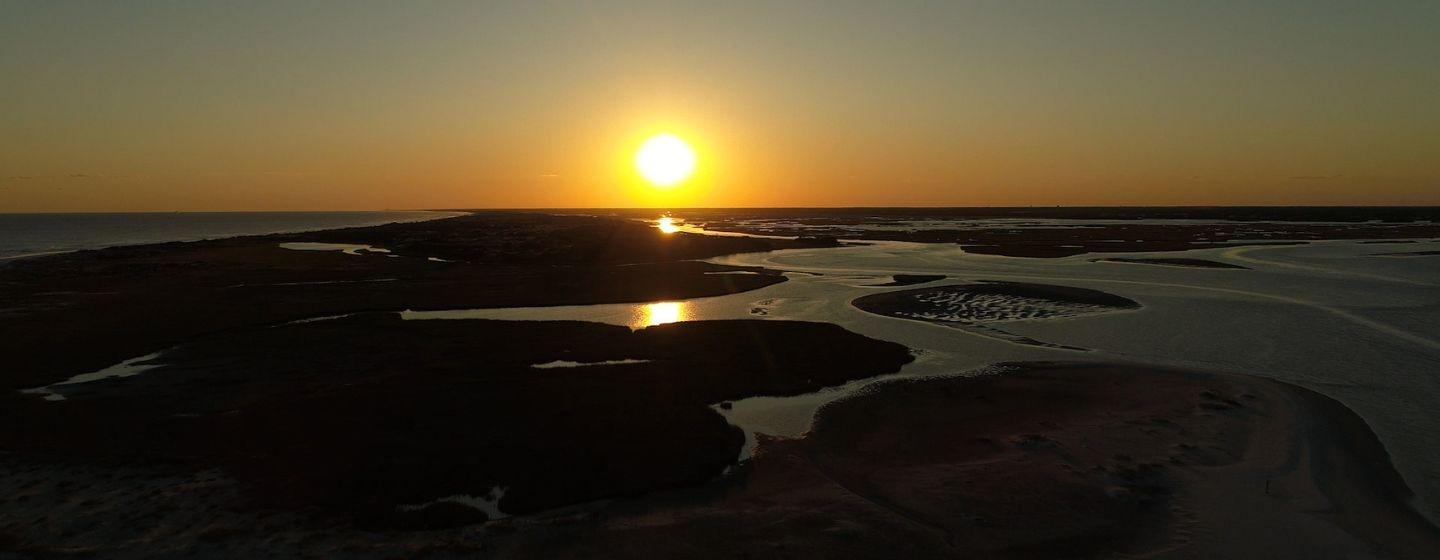How Estuaries Boost the Economy and Slow Climate Change


Estuaries, where river water mixes with seawater, are unique areas along the coast.
Residents and visitors have always considered them valuable—good places to fish, nice to look at. But a new report adds some numbers to quantify just how valuable estuaries really are. And for the first time, the document also looks at the value of estuaries in mitigating the effects of climate change.
“What happens in estuaries affects all of us,” said Daniel Hayden, the president and CEO of Restore America’s Estuaries, one of the groups that prepared the report titled “The Economic and Market Value of America’s Coasts and Estuaries: What’s at Stake?” The Ocean Foundation also worked on the project.
First, a bit of science.
Estuaries are partially enclosed coastal bodies of water where fresh water from rivers and streams meets salt water from the ocean.
The mixing waters create a unique habitat for fish, shellfish, birds and other animals as well as vegetation. The main drivers of all that water mixing in estuaries are tides.
Some estuaries are governed by lunar tides, which occur at regular cycles and are influenced by the gravitational pull of the moon. Some are governed by wind tides, which, as the name suggests, are influenced by the speed and direction of the wind blowing over the estuary.
In general, estuaries are part shallow bodies of water, part swampy areas and part wetlands.
“Estuaries are small places with huge economic impact. They’re 4% of the continental landmass in the U.S., eight of our 10 largest cities are along estuaries, 40% of our U.S. population and 47% of our gross domestic product are all generated from estuary counties,” Hayden added.
The report specifically looks at how estuaries benefit the economy through fisheries, energy infrastructure, marine transportation, real estate and recreation.
The new findings are an update of a report on estuaries first prepared in 2009. The National Oceanic and Atmospheric Administration (NOAA) supported the first study, which looked at the economic impacts of estuaries to both state and national gross domestic product in 21 regions of the country.
The areas studied bordered the Atlantic and Pacific Oceans, the Gulf of Mexico and the Great Lakes.
The new findings show from 2009 to 2018 employment, population, housing and gross domestic product grew faster in estuary regions than anywhere else in the U.S. The regions provided 3.1 million jobs and contributed $301.9 billion to the U.S. economy in 2018.
Estuaries produce more food per acre than the most productive Midwestern farmland and provide habitat for more than two-thirds of U.S. commercial fish harvest.
The 2021 update was prepared by TBD Economics and the Center for the Blue Economy. So, while the updated report expands on the 2009 project, it also reflects growing concerns over climate change.
There’s a fresh look at “natural infrastructure” such as wetlands and oyster reefs. NOAA defines natural infrastructure as a healthy ecosystem, including forests, wetlands, floodplains, dune systems and reefs, that protect the coast from storms by providing a buffer from storm surge flooding and large waves from storms.
The report also delves into the importance of what is called “coastal blue carbon.” That’s the carbon dioxide stored in the grasses and trees that make the wetlands central to coastal ecosystems. That stored carbon dioxide won’t add to global warming.
Besides mitigating the effects of climate change, those grasses and trees provide nursery habitat for fish.
The report says the increased focus on climate change and what it means for estuaries is a better way to view ecosystem services.
Researchers examined the economies around six major estuaries in the country, including Pamlico Sound. The 3,000 acres (about half the area of Chicago O’Hare International Airport) of water, oyster reefs, wetlands and marsh that encompass Pamlico Sound are features that improve water quality by reducing erosion and wave activity and filtering water.
New data shows seagrass meadows are considered some of the most important natural carbon sinks in marine environments. A carbon sink is anything in the natural environment that absorbs more carbon than it releases. That’s why carbon sinks are crucial to slowing climate change.
In 2016 recreational fisheries had a $1 billion impact on the state economy, commercial fisheries had a $180 million impact and saltwater fishing created almost 17,000 jobs. In 2019 commercial fishers landed over 10 million pounds of seafood valued at over $15 million in and around Pamlico Sound. The economic impact of tourism in 2012 by Dare, Carteret, Currituck and Hyde Counties exceeded $1.37 billion.
However, there are worries about the dangers that nutrient runoff from stormwater, agriculture, wastewater treatment and industrial facilities pose to the sound. In addition, heavy rains, flooding from rains and storm surge worsened by climate change, as well as saltwater intrusion fueled by sea-level rise, are also a threat.
As for the additional focus on mitigating climate change, the report says the combined value of the natural infrastructure and coastal blue carbon benefits range from $173.6 to $940 million.
In addition to Pamlico Sound, the report looked at Great Egg Harbor in New Jersey, Tampa Bay in Florida, Terrebonne Basin in Louisiana, San Pablo Bay in California and Snohomish Estuary in Washington. The report estimates the value of blue carbon sequestration totals $600 million to $3.7 billion, and natural infrastructure helped avoid between $1 billion and $3.1 billion in property losses.
It’s a value that will only increase.
“Beyond these measurable benefits, estuaries are at the heart of so many of our coastal communities,” said Hayden. “Without healthy estuaries, ways of life that have defined our communities for generations would disappear.”
“Estuaries play a really important role in protecting communities from the impacts of flooding, climate change and sea level rise,” said NOAA Office of Habitats Conservation director Carrie Selberg Robinson. “And habitats like salt marshes and seagrass beds serve as natural infrastructure that protect coastal communities from flooding and erosion.”